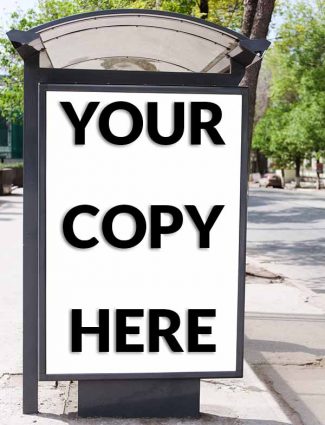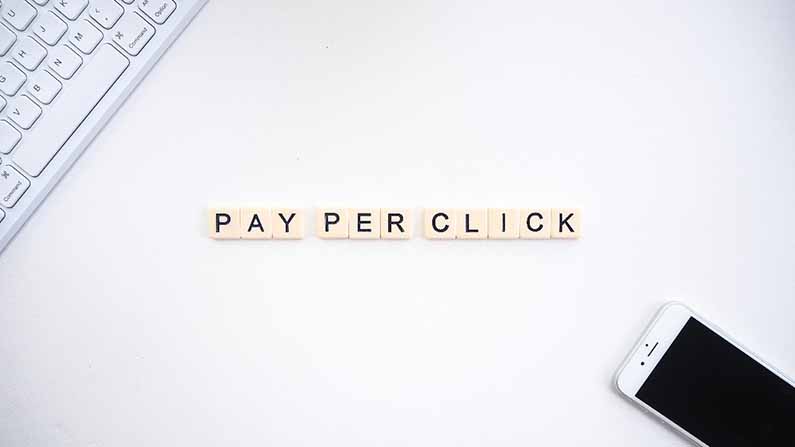How to Write Ad Copy That Sells Anything

You’ve got your product or service, now you need to sell it. Advertising has always started with one thing: getting attention. That’s why you need to write copy that sells.
But in the era of search engines and social media, where there is an infinite supply of content vying for our eyeballs, how do you get noticed? How do you make sure that people understand your message?
You have to speak their language, but more importantly, you must tell a story they identify with. In this article we’ll look at the evolving landscape of writing copy for digital media.
We’ll examine current and emerging trends, zero in on the things that haven’t changed, and discuss how to craft ad copy for any platform.
Ready to learn how to write ad copy that stops scrolls and gets clicks? Then read on.
What is Ad Copy?
Ad copy is the text component of any advertisement. This includes the headline and any sub headlines, the body copy, and the call-to-action (CTA). Sales copy is text designed to generate sales, whether it is ad copy or on a sales page.

How To Write Ad Copy That’s Effective and Efficient
For the purposes of this article I’ve boiled down the process of writing ad copy into 6 simple steps. Any time you’re creating ad copy, you can come back to these six steps for easy reference.
- Start with why
- Create a customer avatar
- Build the brand voice and vocabulary
- Write a lot of headlines
- Craft the body copy
- Choose a CTA and polish
Let’s dive a little deeper into each of these steps and the sub-steps within them.
Start With Why – and Why, and Why
Selling anything starts with answering two questions in a satisfying manner; why will the customer buy it, and why is the vendor selling it?
The first answer can be any combination of benefits, emotions, features, and associations. The second answer should be a compelling story that will connect the audience with the brand.
But the “whys” don’t end there. Here are some other why questions that you’ll want to know the answers to before you start writing:
- Why now?
- Why me?
- Why this and not that?
Adding these questions to the mix makes it clear why copywriting is about much more than benefits and features.
Most prospective buyers will ask themselves (and potentially their friends/family) variations on the listed questions before making even a small purchase if it falls outside their usual habits.

Create a Customer Avatar – Know The Buyer
This is a super simple yet crucial step to selling anything online. Build a customer avatar (also called a buyer persona and a few other names) based on your research and any data you have available.
Make the avatar as detailed as you can – age, gender, location, income level, where they shop and why, what social media channels they spend time on, and more.
The more research you do, the better informed your message will be.
It helps to create a visual representation of the buyer persona.
For example, you can find an image that looks like the person you envision on a stock website. Then, put it in the center of a large document such as a Google Slides presentation and add information around them in a word cloud.
By creating a visual representation you can quickly glance at, you make it easier to both recall and share the concept of your customer avatar.
Build the Brand Voice and Vocabulary
At its core, good advertising is about telling a story that creates an emotional impact on your audience. You have to understand what motivates them and how you can help solve their problems.
Creating a connection between potential customers and the brand is easier when you speak to your audience in a voice they understand and appreciate.
To start crafting a brand voice, I recommend interviewing the owner and/or creator of the company. The only way to truly start with a company’s “why” is to ask the person who started it… why they started it.

Write a Lot of Headlines
This won’t be surprising if you’ve had any other type of writing experience. The most important part of any piece of copy is the headline.
A great, concise, descriptive headline can be worth more than its weight in gold when it comes to getting clicks and shares. If you don’t have any great ideas, don’t worry! Use one of these copywriting formulas:
If [common problem], then [specific solution]
Example: If you’re looking for a way to earn more online, then copywriting is for you!
How [brand/person] [achieved a specific feat] despite [obstacles faced]
Example: How I obtained 20 rental properties by age 30 with no up front investment
What is the best way to [goal of target audience]?
Example: What is the best way to start an online business?
Attention [target audience]! If you’re like me…
Example: Attention martial arts enthusiasts! If you’re like me…
Like with any kind of copywriting, using formulas like these will let you kickstart your brainstorming even if you’ve got no ideas.
Craft the Body Copy
This is where you really get to employ your creativity and research, as well as classic tried and true copywriting formulas. AIDA (attention, interest, desire, action), PAS (problem, agitate, solve), BAB (before, after, bridge) all have their place in the world of digital advertising.
But how do you know which one to use, and how to use it?
Use your research. Ask yourself; what is the first line the target audience needs to read to catch their attention? Then, what’s the perfect follow-up sentence to that, and so on?
Here are a few different ways you can potentially start an ad:
- A question that intrigues the reader
- The answer to a burning question your target audience has
- An exciting statistic or piece of information
- A list to make them feel like they’re skimming an article, not reading an advertisement.
Once you have your body copy flowing, you might be surprised how easy it is to finish off. Just follow the framework or formula you’re using in a satisfying and creative way.

Choose a Great CTA (Call To Action) and Polish It Till It Shines
There’s a common saying among writers: “show, don’t tell.” Similarly, a call to action should be designed so that the reader sees it and wants to click on it.
In the case of online ads, this usually means a short URL that contains relevant keywords. domain.com/free-training looks a lot better than domain.com/pages/free-training-webinar-2.
Some types of digital ads such as Facebook ads come with a visual CTA button which you can customize to a certain extent. Make sure you choose the best option for your ad, because lots of people will be drawn to the button.
When it comes to the non-link component of your CTA, here are a few different ways you can encourage your audience to take action:
- Sign up for my newsletter and get 10% off your first purchase!
- Need help placing an order? Contact us today!
- Click here if you want to learn more about our products and services
- Get your free download of our guide here
Other Things to Keep in Mind
To experienced writers most of these points may seem obvious, but they’re important for everyone to remember:
- Avoid long run-on sentences and over-use of punctuation
- Use emoji and ALL CAPS when appropriate to create a visual flow
- Keep paragraphs well spaced but not too much so
- Use a voice and language your target audience identifies with
And of course, always proofread and continue learning to hone your skills.
There’s really no “right” way to learn copywriting, but tried-and-true methods include reading books by and about legendary writers, taking courses, and studying and/or rewriting current and past high performing ad copy.
Conclusion: Picking Your Path of Persuasion
At the end of the day, ad copywriting is about creating a user experience that nudges your customers towards taking action just the right amount. Nudge too hard, and you risk alienating your audience. Not hard enough, and they won’t get the message.
Copywriting, marketing, and content marketing are inherently linked. In some ways you could say that copywriting is the purest form of marketing. You have to convince someone to buy (or take action) with nothing but words on the screen.
While using the right keywords (especially the power words and emotion words you selected for your target audience) is important, drilling down the emotional heart of the matter is more important than matching a search query.
Now you know how to write ad copy that you (or your clients) can be proud to publish. Give this article a share if you found it helpful!

